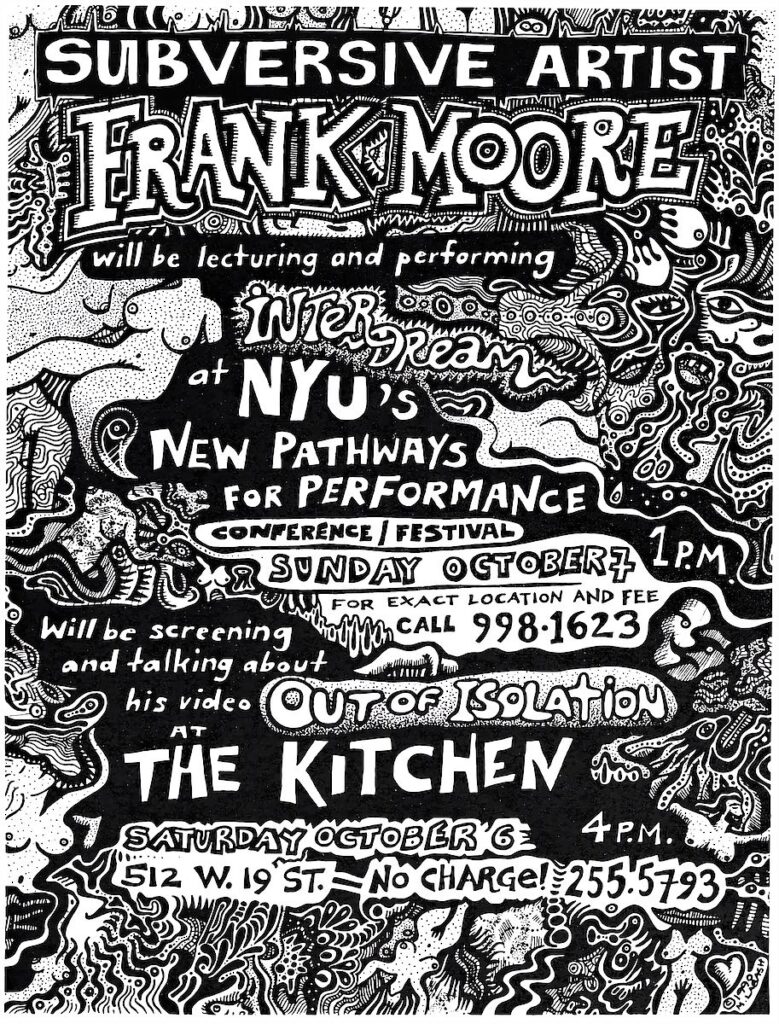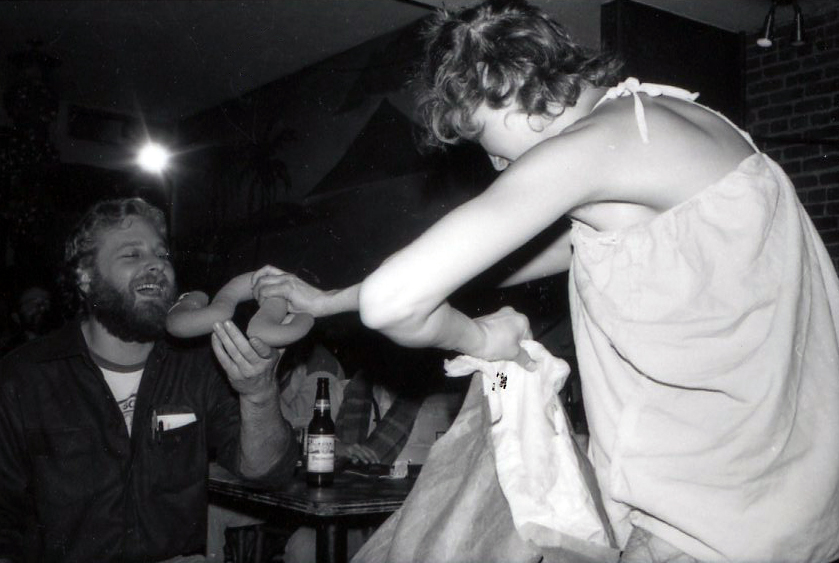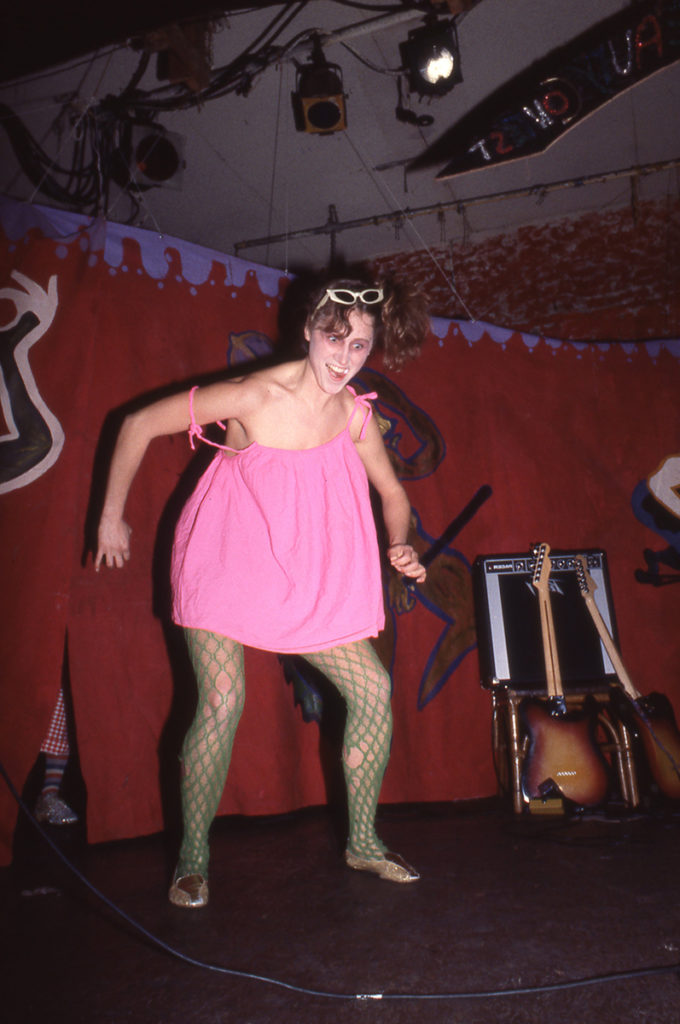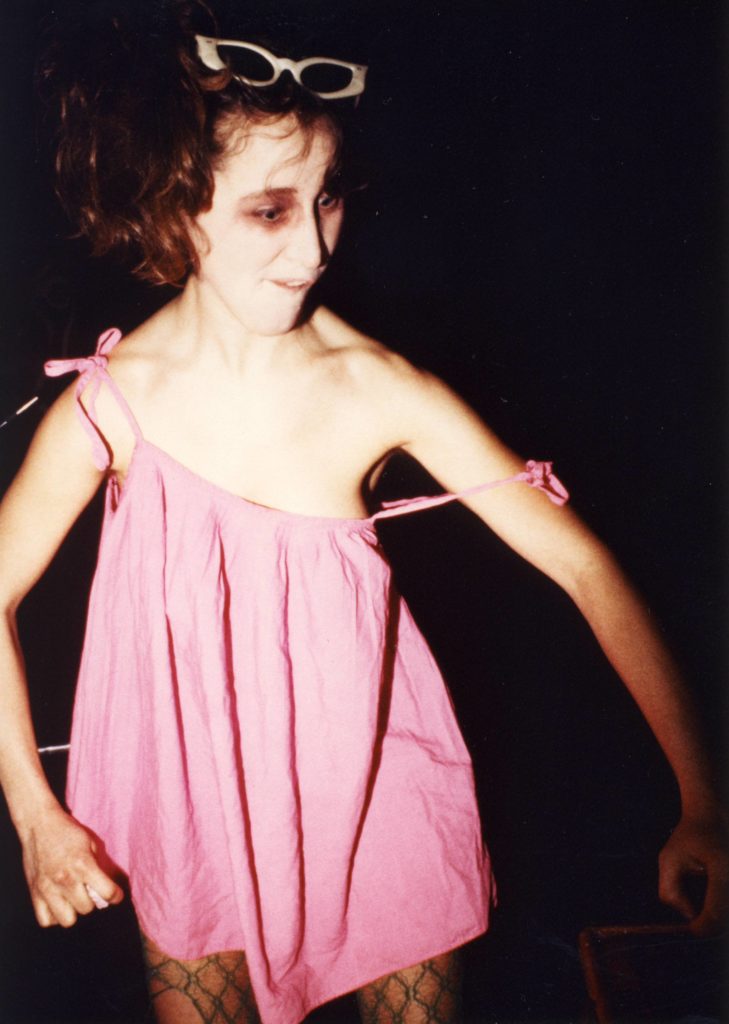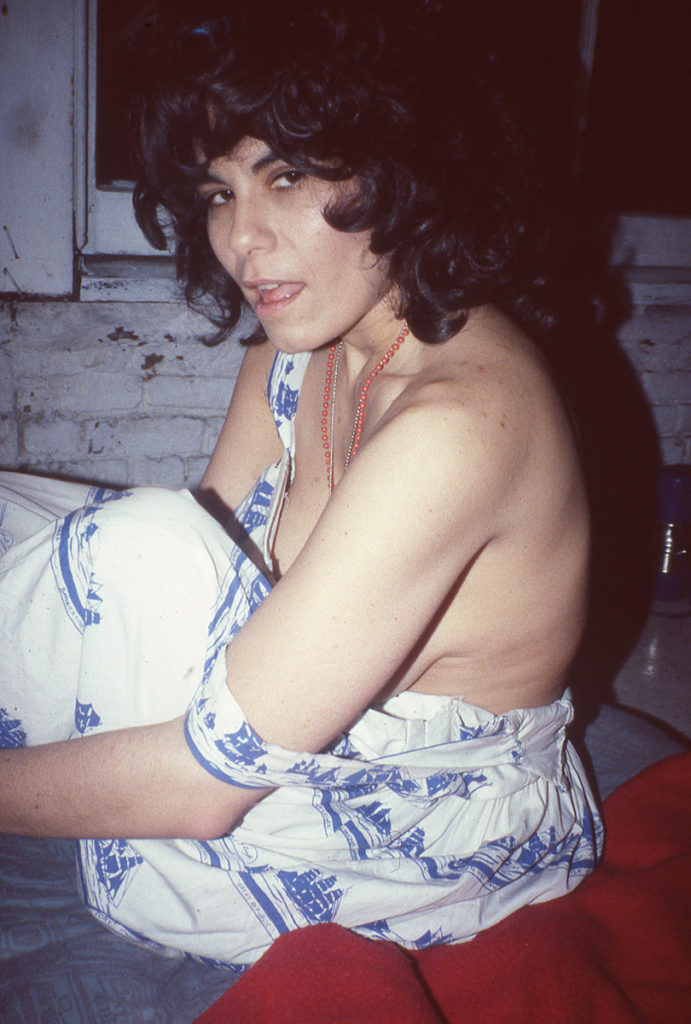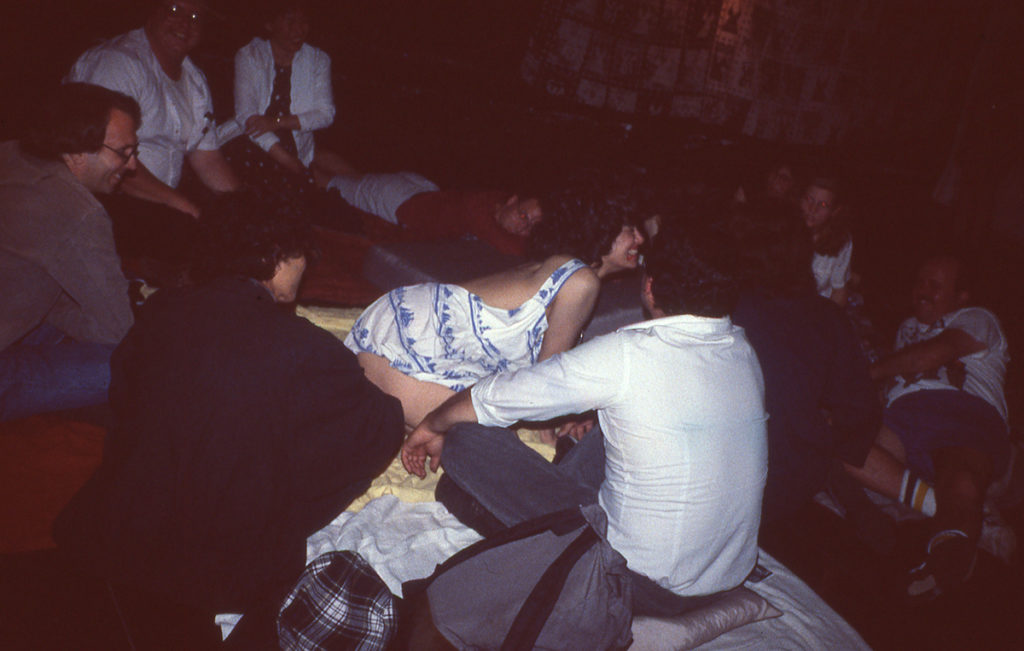A piece written by Veronica Vera that was published in High Performance magazine, #53, Spring 1991.
Frank Moore communicates his world to his audience. It is a slow world built on trust. Because for a “crip” (Moore’s word to describe his cerebral palsy), time is elongated and things happen through cooperation. Frank Moore cannot move a distance of five feet on his own, but he can lead an audience by giant leaps through innerspace.
Out Of Isolation, Moore’s simple two-character video at The Kitchen, described the initial meeting and subsequent week of physical therapy between a spastic (Moore) and his nurse (Linda Sibeo). At first the patient was unresponsive to the nurse’s well-meaning but torturous, by-the-book approach: pulling at his limbs, massaging him with ice cubes and bristly paint brushes, petting and swatting him as she would a dog. Occasionally, she revealed a personal side, using the patient as her confidant. She decided to return on the weekend to pay him a non-professional visit, and by the end of the visit, they lay naked together, cuddling, sharing. Not only has the patient come out of isolation, but so has the nurse.
This is the pivotal message of every Frank Moore performance: that physical interaction—the sharing of energy, the sensual “eroplay”—is essential to life, and the more we strip it down to its basic level, the more we benefit from the force of the interaction.
That same weekend, Frank Moore and Chero company presented INTERDREAM as part of New York University’s “New Pathways For Performance” conference. Body painting, massage, primal music, chanted poetry—INTERDREAM contained all of Moore’s favorite methods of communication, including the shaman’s tent where he lay naked ready to receive audience members, collaborators, who chose to go deeper into the cave. Among the audience were members of “Disabled in Action” and “Artists With Disabilities. Inc.” They greeted his performance with enthusiasm, and contributed to bridging the gap between artist and audience.
Because I had performed with Frank Moore twice, I thought that if I entered the cave as merely one of the audience members, I might feel a let down. Blindfolded, I was led to a clear space on the shaman’s mat. I reached out and felt bodies, some clothed, some bare-skinned beneath my fingers. My clothes were a barrier, so I removed my blouse and bra. I felt Frank, his thick tongue and glasses, then I felt a woman’s breasts, legs and arms, and I couldn’t tell where one person ended and another one began. I lay with the god Shiva, half-man, half-woman, cradled by warm human flesh, so vulnerable, yet so safe. And then I began to cry. I cried my way out of isolation.
—Veronica Vera
Out of Isolation was presented at The Kitchen in New York City, October 6, 1990. INTERDREAM was presented at New York University, Tisch School of the Arts, as part of “New Pathways In Performance,” October 7, 1990.
Veronica Vera is a literary artist. She is creator of The Theory of Sexual Evolution.

